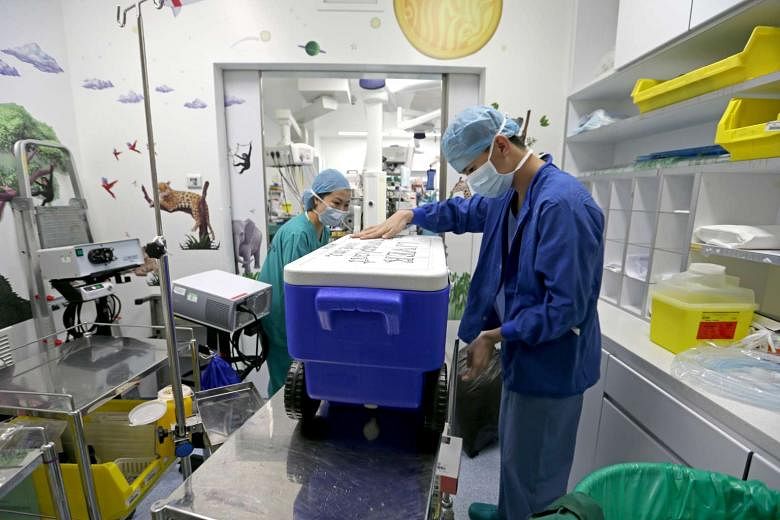SINGAPORE - There is a hidden world in hospitals, one which patients and their families rarely see.
It is a second home to surgeons, nurses and many other medical professionals involved in surgeries; a warren of passageways leading to operating theatres, changing and shower rooms, and even a small canteen.
At the National University Hospital, the place is a sea of blue and green, the surgical attire worn by all. And as those in scrubs cannot leave this "back of house" without changing, many of the personnel stay put here once they enter.
When I was given permission to observe doctors conducting a paediatric liver transplant, my eyes were opened to this world.
That day, a massive team of surgeons, specialists, nurses and medical personnel from 13 different departments and divisions at NUH worked almost without rest to transplant part of a father's liver into his 22-month-old son.
I marvelled at the extreme focus of surgeons, who stood rooted to the spot for hours as they performed the tiniest cuts, making sure little Jeremy Guo's faulty liver could be removed without nicking any of the numerous blood vessels lining the organ.
I saw the concentration on the face of the OT nurse, who handed out equipment and sutures at lightning speed - almost before doctors asked for them.
There was a camaraderie among the team that was almost tangible, bonds forged perhaps, over the many lives saved at their hands.
The attention to detail was second to none, as was the care taken to ensure that hygiene was observed at all times.
Toilet breaks were almost unheard of.
But gleaming, modern equipment aside, other facilities were simple.
When one surgeon took his first break, and his first meal of the day at around 7pm, some 12 hours after he first picked up the scalpel, he sat down at a plain bench in the canteen to cold pizza that had been delivered hours earlier.
A television was on in the corner, but nobody was watching.
Rests were short and functional, and everybody was always keen to jump back into the job at hand.
At the end of it all, I was exhausted after my 18-hour day, and I had just been observing.
Leaving the hospital that night, I felt privileged to have been able to witness the skill, passion and sheer grit of the many people involved in saving little Jeremy's life.


